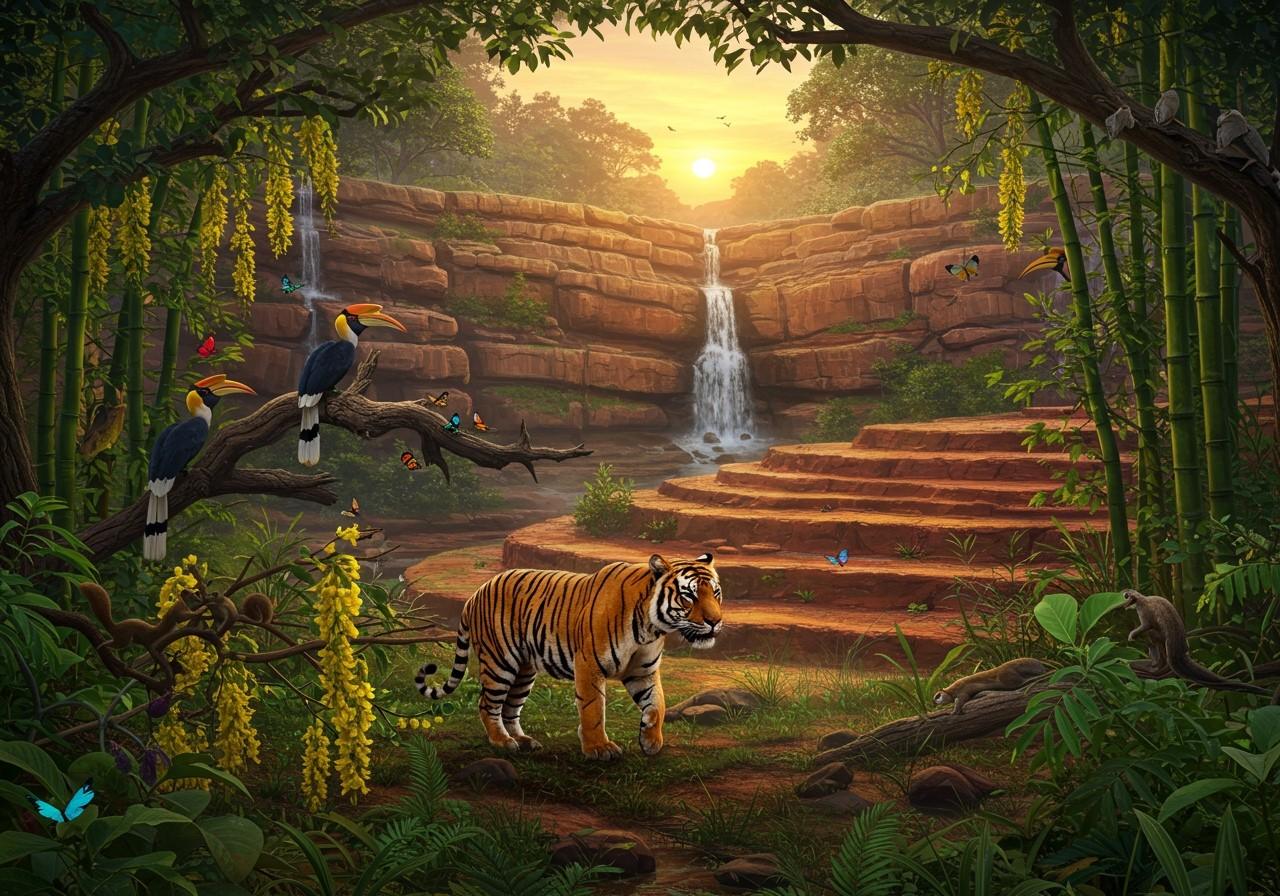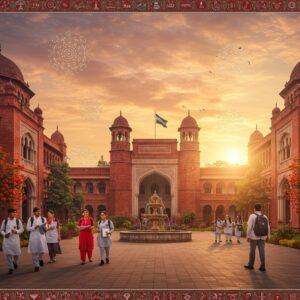
The Deccan Plateau, a significant geological feature in the Indian subcontinent, is known for its unique basaltic landscape formed by ancient lava flows. This biodiversity hotspot boasts varied ecosystems, including dry deciduous forests, scrublands, grasslands, and savannas, supporting a wide array of flora and fauna, including endemic species. Despite its arid stretches, the plateau’s diverse topography provides distinct habitats, though human activities pose threats to its biodiversity. The region still retains vast natural habitats suitable for conserving large species like the Bengal tiger.
Deccan Plateau Flora
The Deccan Plateau’s vegetation is incredibly diverse, reflecting its varied climate and geography. Endemic plant species thrive here, including sandalwood trees and teak forests. The region is also abundant in medicinal plants, essential to traditional Indian medicine. The Western Ghats significantly contribute to the plateau’s floral diversity, with the monsoons bringing seasonal changes to the plant life.
Types of forests:
- Dry deciduous: These forests are characterized by trees that lose their leaves during the dry season, an adaptation to conserve water. The dry deciduous forests of the Deccan are home to a variety of drought-resistant species.
- Moist deciduous: Found in areas with higher rainfall, moist deciduous forests have a greater diversity of tree species compared to dry deciduous forests. These forests provide habitat for a wider range of animal life.
- Thorn forests: These forests, dominated by thorny shrubs and trees, are adapted to arid conditions. They play a vital role in preventing soil erosion and providing shelter for smaller animals.
These forests play a vital role in supporting wildlife and maintaining the ecological balance.
Deccan Plateau Fauna
The Deccan Plateau is home to a wide range of animal species, many of which are endemic. Large mammals like tigers, leopards, and Indian bison (gaur) roam the area. The plateau also serves as a crucial habitat for various deer and antelope species. Smaller mammals include civets, mongoose, and various bat species. Reptiles such as the Indian rock python and king cobra are also native to this region. Conservation efforts are crucial to protect these endangered species and their habitats.
Insect biodiversity:
- Butterflies: The Deccan Plateau is home to a diverse array of butterfly species, adding to the region’s vibrant beauty. Their presence is an indicator of a healthy ecosystem.
- Beetles: A wide variety of beetle species contribute to the Deccan Plateau’s insect biodiversity, playing essential roles in nutrient cycling and decomposition.
Deccan Plateau Birds
The Deccan Plateau is a birdwatcher’s paradise due to its diverse avian population. Notable bird species include the Indian peafowl, Malabar whistling thrush, eagles, and vultures. Migratory birds also visit the plateau during different seasons. Wetlands and water bodies provide essential habitats for bird life and breeding grounds.
Bird sanctuaries and protected areas are crucial for bird conservation. However, human activities impact bird populations, necessitating measures to mitigate these effects.
Deccan Plateau Soil
The soil of the Deccan Plateau is varied, with each type contributing to the region’s agricultural productivity and overall biodiversity:
- Black cotton soil: Rich in calcium carbonate, magnesium, potash, and lime, black cotton soil is vital for agriculture, particularly for crops like cotton, wheat, and millets. Its high water retention capacity makes it ideal for these crops.
- Red soil: Found in low rainfall areas, red soil is rich in iron but poor in nitrogen, phosphorus, and organic matter. This soil type requires careful management for sustainable agriculture.
- Laterite soil: This soil type, formed through weathering in tropical regions, is suitable for crops like cashew nuts and tapioca. Its unique properties contribute to the diversity of the Deccan’s agricultural landscape.
Soil erosion and degradation pose a threat to agriculture and biodiversity. Therefore, conservation practices are essential to maintain soil health and prevent erosion.
Interdependence of Flora, Fauna, and Soil
The biodiversity of the Deccan Plateau thrives on the intricate interdependence between its flora, fauna, and soil. Vegetation plays a vital role in soil conservation and erosion prevention. Fauna contributes to seed dispersal and pollination, maintaining plant diversity. Soil provides essential nutrients to plants, supporting the entire food chain. Deforestation and habitat destruction disrupt this delicate balance. Traditional agricultural practices are often more sustainable, preserving the ecological harmony of the plateau. Modern conservation efforts aim to protect the rich biodiversity of the Deccan Plateau.
Sacred Items from the Deccan’s Natural Bounty at Poojn.in
The Deccan Plateau’s rich biodiversity provides a wealth of sacred items used in traditional Hindu rituals. At Poojn.in, we offer a variety of authentic products sourced from this region:
- White Mustard (Safed Sarson): Available in multiple quantities (25g to 1kg), this sacred seed is essential for many ritual purposes. Poojn.in sources high-quality mustard seeds from the Deccan’s fertile soil for use in various religious ceremonies.
- Ayurvedic Herbs (Jaribooti): Our extensive collection includes carefully sourced medicinal plants native to the Deccan region, packaged to maintain their ritual purity and potency. Discover the power of authentic Ayurvedic herbs at Poojn.in.
- Holy Food Items: We offer various food items grown in the Deccan’s unique soil conditions, perfect for prasad and religious offerings. Poojn.in ensures the quality and authenticity of these sacred food items.
Visit Poojn.in to explore our complete range of authentic puja items from the Deccan region. We ensure proper packaging and timely delivery of all ritual items across India. Note: Product availability and prices may vary. Please check the website for current details.
Conclusion
The Deccan Plateau is a true treasure trove of biodiversity, a harmonious blend of flora, fauna, and unique soil types. This rich ecosystem, shaped by its unique geographical and climatic conditions, exemplifies the beauty and complexity of nature. From sandalwood trees and teak forests to majestic tigers and vibrant birdlife, every element plays a crucial role in maintaining ecological balance. Understanding the intricate relationships within this ecosystem allows us to appreciate the delicate balance that sustains this region. It highlights our responsibility to protect and conserve this natural heritage for future generations.


